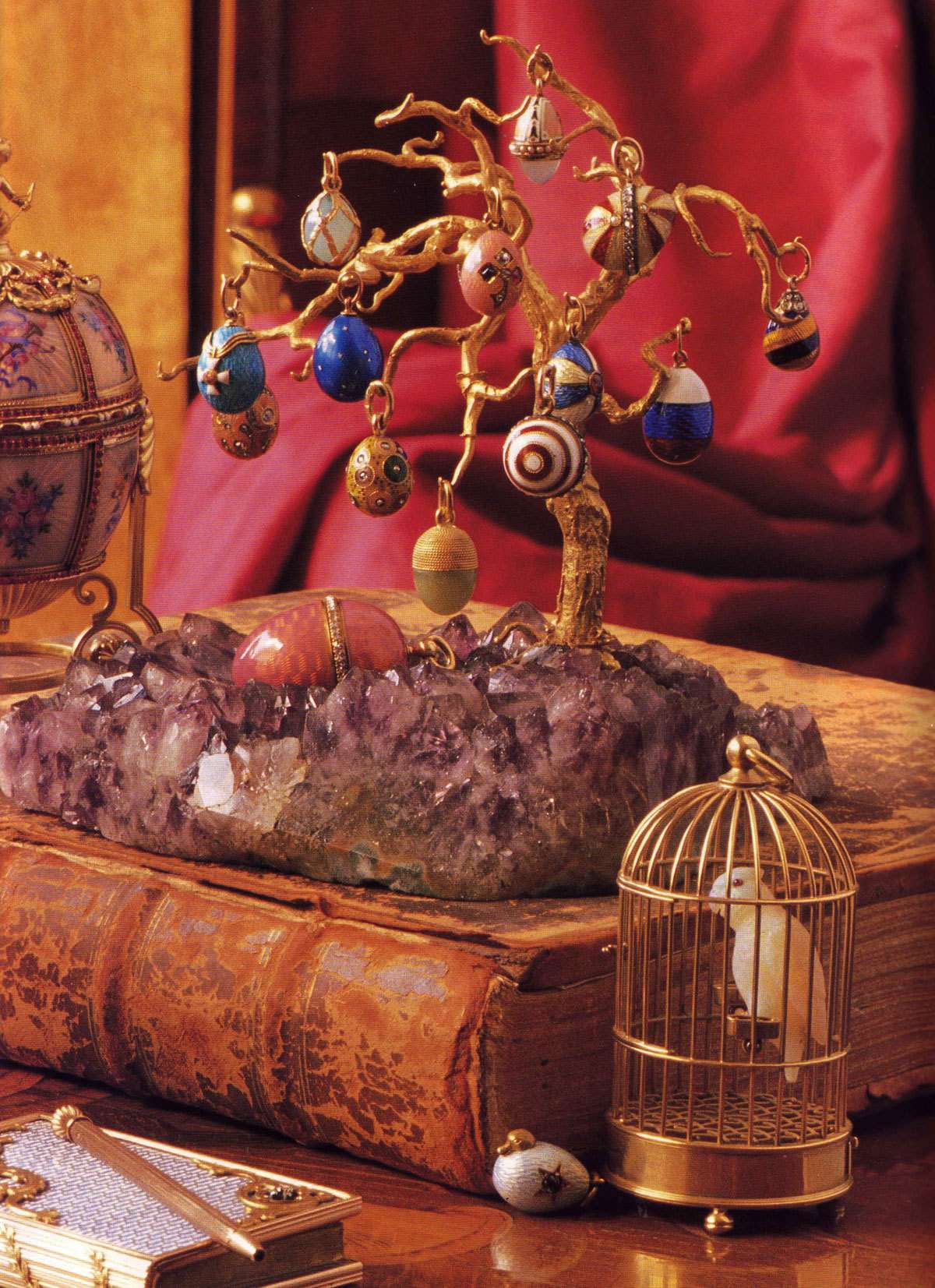On Peter Carl Fabergé, the man:
...If we are to find some explanation for the goodness of Fabergé...we must go once again to his sense of humor, his sense of the ridiculous. Shortly put, I would say this, when anything presented itself to be done, he never thought of it as 'bad' or 'good' as generally defined, but as silly and stupid or not silly and not stupid.On "killing the diamond," rethinking luxury:
Carl and Agathon Fabergé drew in their horns when they made a departure from objects of jewelry to objects of fantasy. Alexander III drew in his horns when he commissioned Fabergé to make him a set of Easter eggs and not tiaras.... These three men virtually killed the diamond and all the other precious stones; not as objects of brilliance and beauty in their own right, but as those symbols of power and riches and magic... From henceforth it was assumed that to offer any gift in which the value of the workmanship was exceeded by that of the materials employed, that is to say any article which had blatantly written across it 'I have cost a lot of money' was taboo. To the rule there was one exception only, when the recipient was a near relative or very dear friend.And, on heading for ruin (in style. This is how it's DONE, yeah!):
[Alexander III, Carl and Agathon Fabergé] pointed [out] that only by the work of his own hands can man fully realize himself, that to obsess himself with those things in which he has had no hand in the making is to induce a state of creeping sickness leading finally to ruin.
Text from Peter Carl Fabergé: His Life and Work by Henry Charles Bainbridge.
Images from Russian Imperial Style by Laura Cerwinske.











